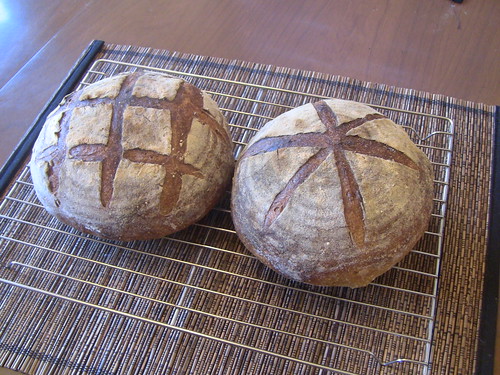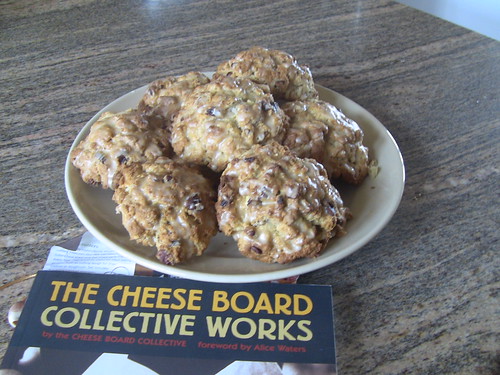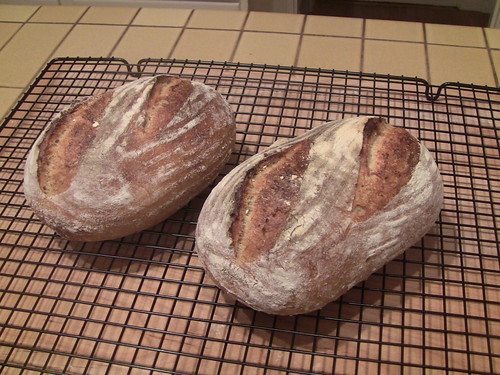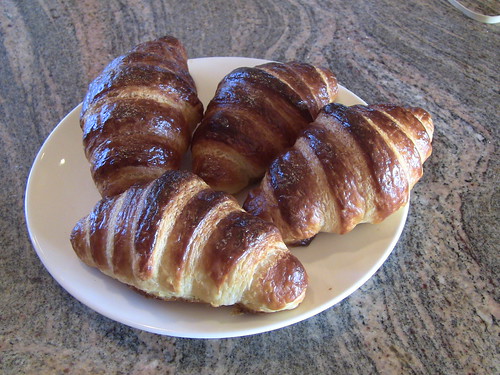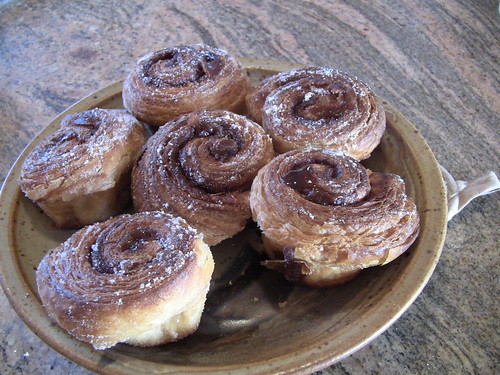dmsnyder’s “San Francisco Style Sourdough” Made in San Francisco!
I baked David’s “San Francisco Style Sourdough”. I used the formula and procedure from his latest blog entry on the on-going experiment (http://www.thefreshloaf.com/node/27982/san-franciscostyle-sourdough-bread-two-ways-3252012), except I did not retard the proofed loaves overnight.
